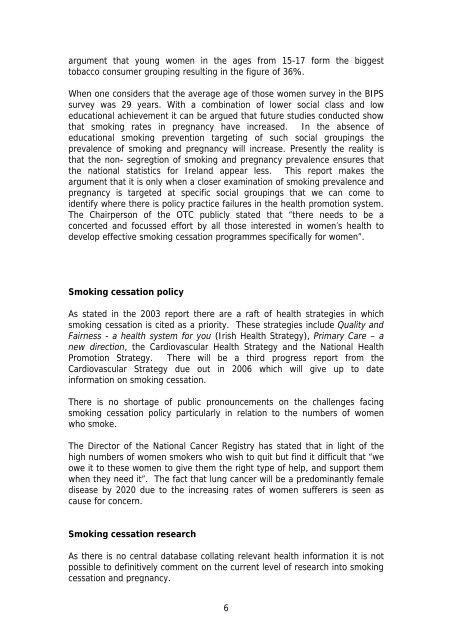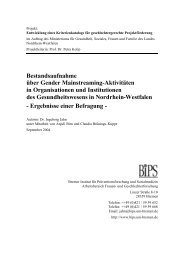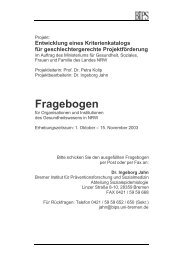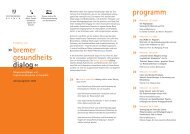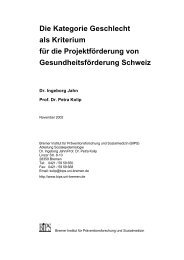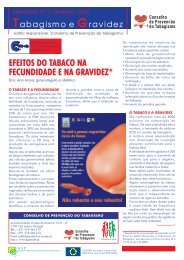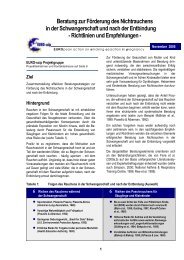You also want an ePaper? Increase the reach of your titles
YUMPU automatically turns print PDFs into web optimized ePapers that Google loves.
argument that young women in the ages from 15-17 form the biggest<br />
tobacco consumer grouping resulting in the figure of 36%.<br />
When one considers that the average age of those women survey in the <strong>BIPS</strong><br />
survey was 29 years. With a combination of lower social class and low<br />
educational achievement it can be argued that future studies conducted show<br />
that smoking rates in pregnancy have increased. In the absence of<br />
educational smoking prevention targeting of such social groupings the<br />
prevalence of smoking and pregnancy will increase. Presently the reality is<br />
that the non- segregtion of smoking and pregnancy prevalence ensures that<br />
the national statistics for Ireland appear less. This report makes the<br />
argument that it is only when a closer examination of smoking prevalence and<br />
pregnancy is targeted at specific social groupings that we can come to<br />
identify where there is policy practice failures in the health promotion system.<br />
The Chairperson of the OTC publicly stated that “there needs to be a<br />
concerted and focussed effort by all those interested in women’s health to<br />
develop effective smoking cessation programmes specifically for women”.<br />
Smoking cessation policy<br />
As stated in the 2003 report there are a raft of health strategies in which<br />
smoking cessation is cited as a priority. These strategies include Quality and<br />
Fairness - a health system for you (Irish Health Strategy), Primary Care – a<br />
new direction, the Cardiovascular Health Strategy and the National Health<br />
Promotion Strategy. There will be a third progress report from the<br />
Cardiovascular Strategy due out in 2006 which will give up to date<br />
information on smoking cessation.<br />
There is no shortage of public pronouncements on the challenges facing<br />
smoking cessation policy particularly in relation to the numbers of women<br />
who smoke.<br />
The Director of the National Cancer Registry has stated that in light of the<br />
high numbers of women smokers who wish to quit but find it difficult that “we<br />
owe it to these women to give them the right type of help, and support them<br />
when they need it”. The fact that lung cancer will be a predominantly female<br />
disease by 2020 due to the increasing rates of women sufferers is seen as<br />
cause for concern.<br />
Smoking cessation research<br />
As there is no central database collating relevant health information it is not<br />
possible to definitively comment on the current level of research into smoking<br />
cessation and pregnancy.<br />
6


